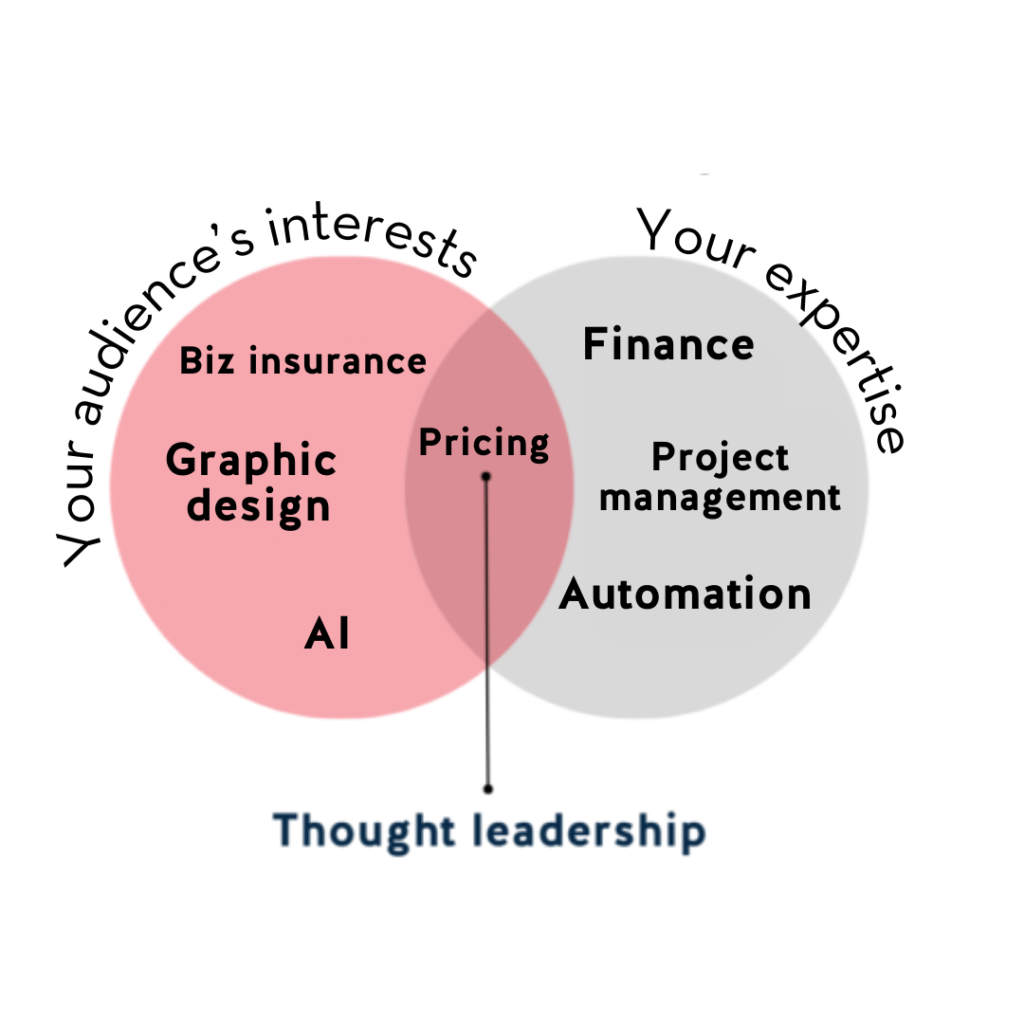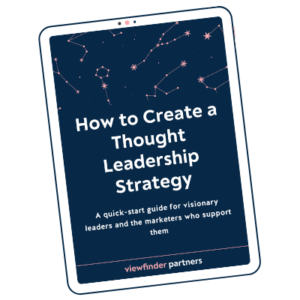A lot of people want to be known for their work and their ideas. But when they step into the role of “expert” or “thought leader,” they’re suddenly at a loss for words. That makes sense: When you’re trying to play a part, perform, or talk about an unfamiliar topic, you’re not going to feel like yourself.
But thought leadership shouldn’t be a performance. Thought leadership is just thinking in public about your work. Talking about the things you know the most about.
So if you start to feel halting and unsure, stop. You’ve strayed outside of your “overlap.”
Find your “overlap”
Great thought leadership happens in the overlap of:
➡️What your audience needs to know.
➡️What you are uniquely positioned to talk about.
The overlap is your sweet spot. It’s your unique expertise, packaged for the people who need it. Anything that doesn’t fit into the overlap is not a priority.

Example: How a thought leader stays in their overlap
So, let’s say you’re an expert in pricing strategy for entrepreneurs in creative fields.
Your audience is craving pricing frameworks to run a more profitable creative business. Great! You know a lot about pricing and you can speak confidently about it. That’s your overlap.

You might also know about project management, but your audience isn’t interested in that. Not your overlap. Maybe you know a little about general business finance and automation, but your limited knowledge wanes in comparison to other existing experts in the field. Not your overlap.
Your audience does need help with continuing ed in graphic design, using AI, and choosing the right business insurance, but you don’t have experience in those areas. Ignore those topics! You don’t have to pretend to know a little about them. Leave those to other experts. They’re not in your overlap.
After years of working with thought leaders to define their overlap, I’ve seen the magic of focusing on your core area of expertise. When you stop performing or playing the role of the expert, and you settle into talking about the things you know a lot about (that your audience is clamoring for), thought leadership becomes easier, natural, and starts to build organically on itself.
Find your overlap and step into your role as an authentic thought leader.






